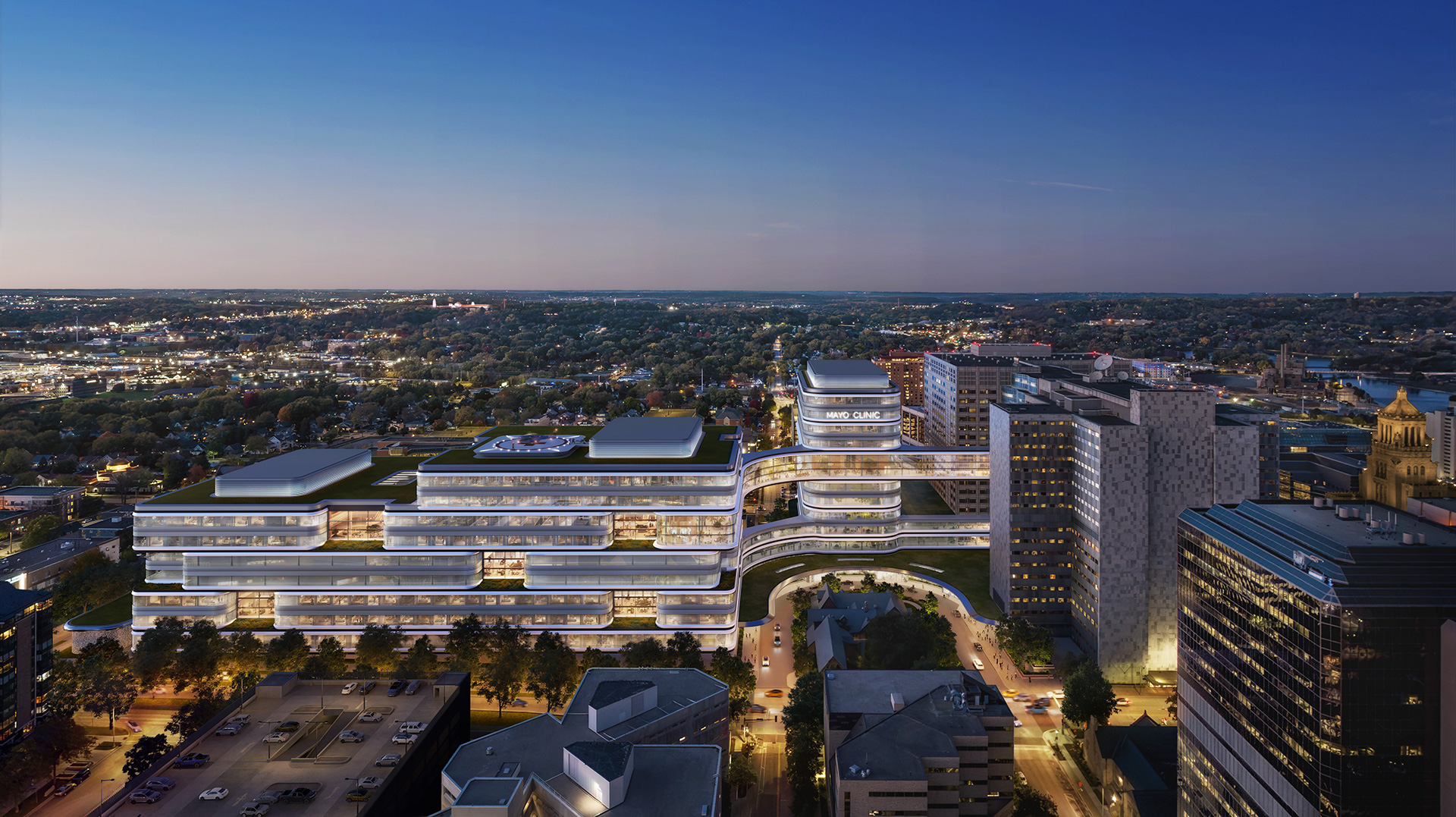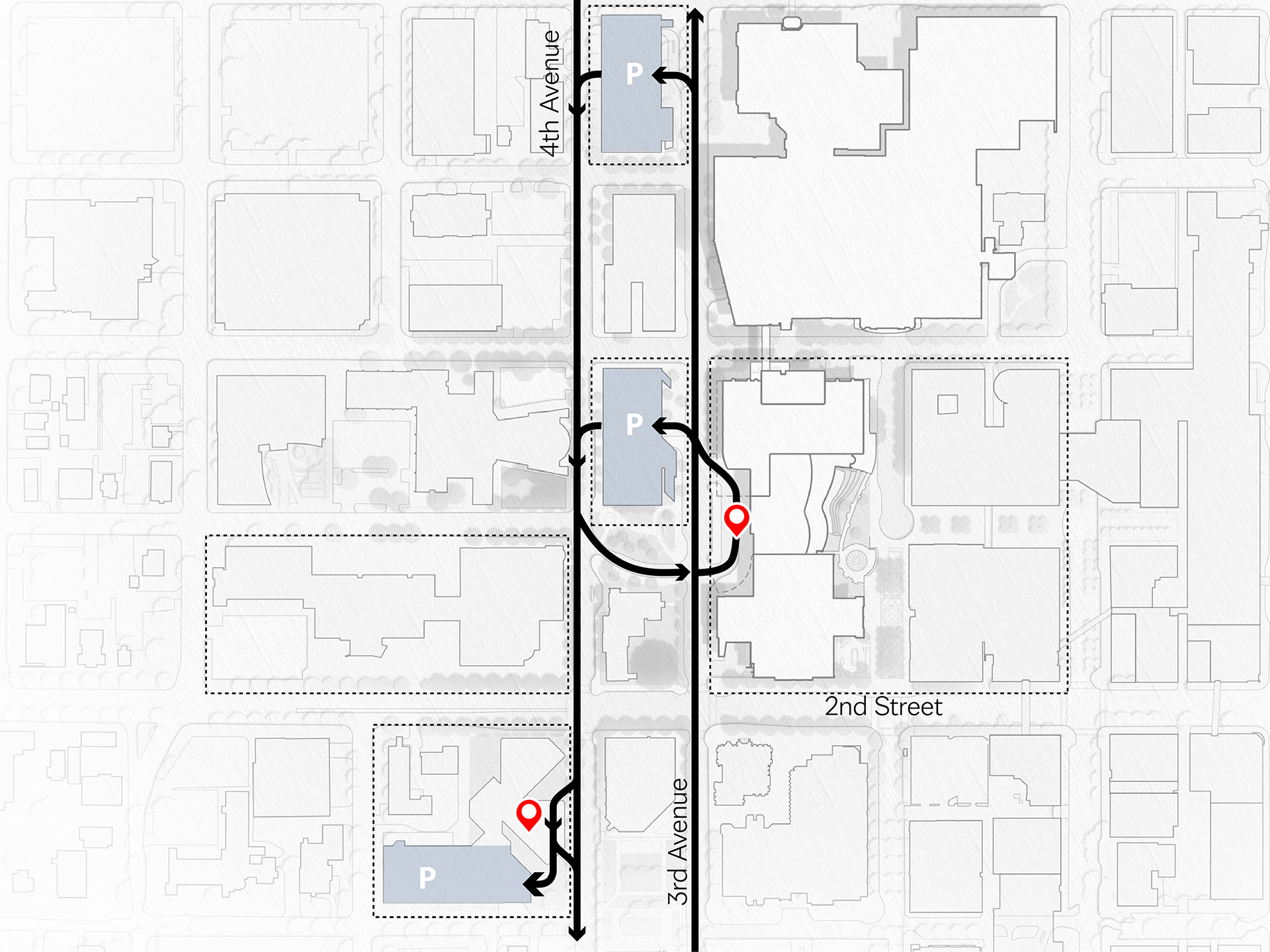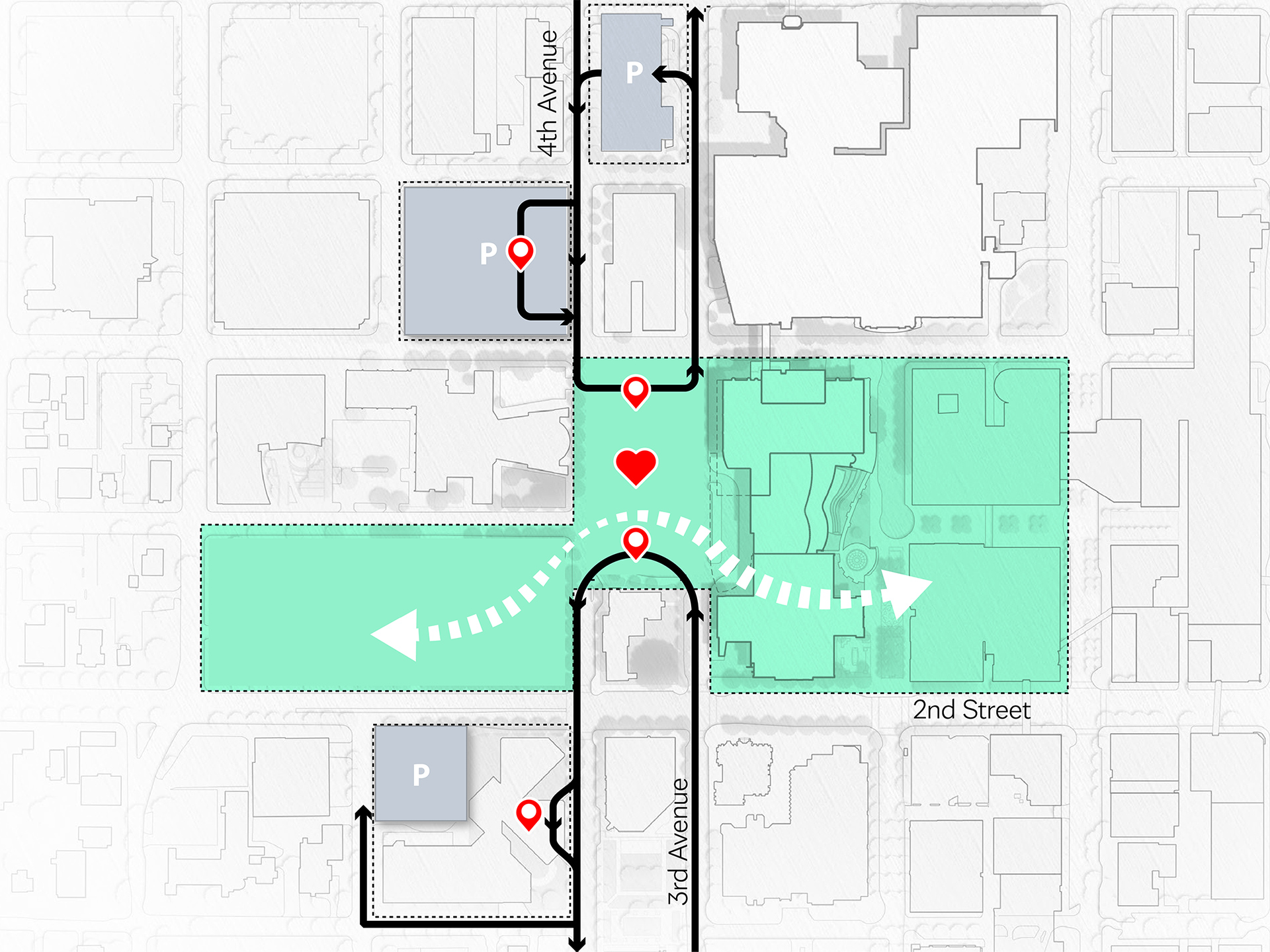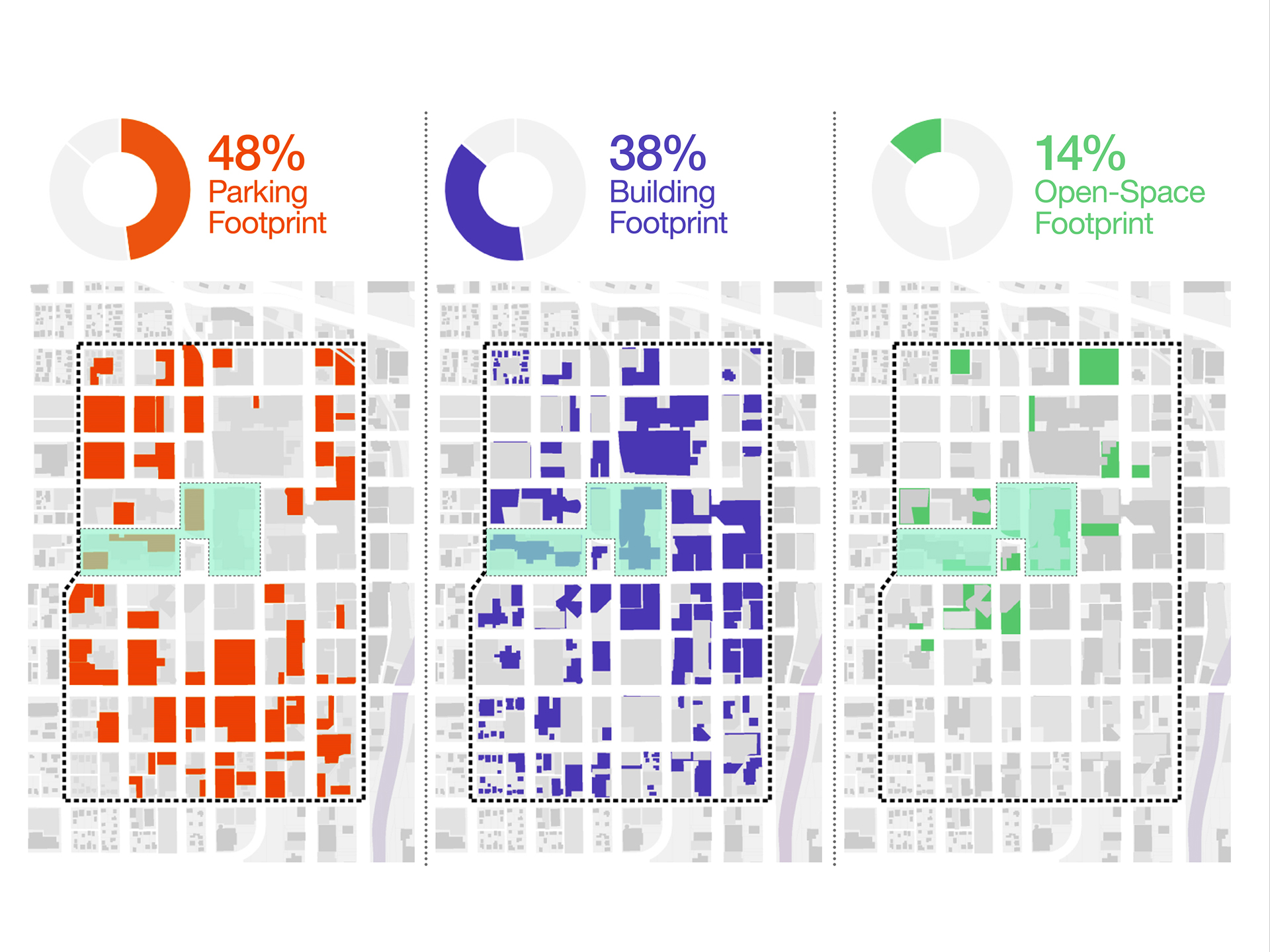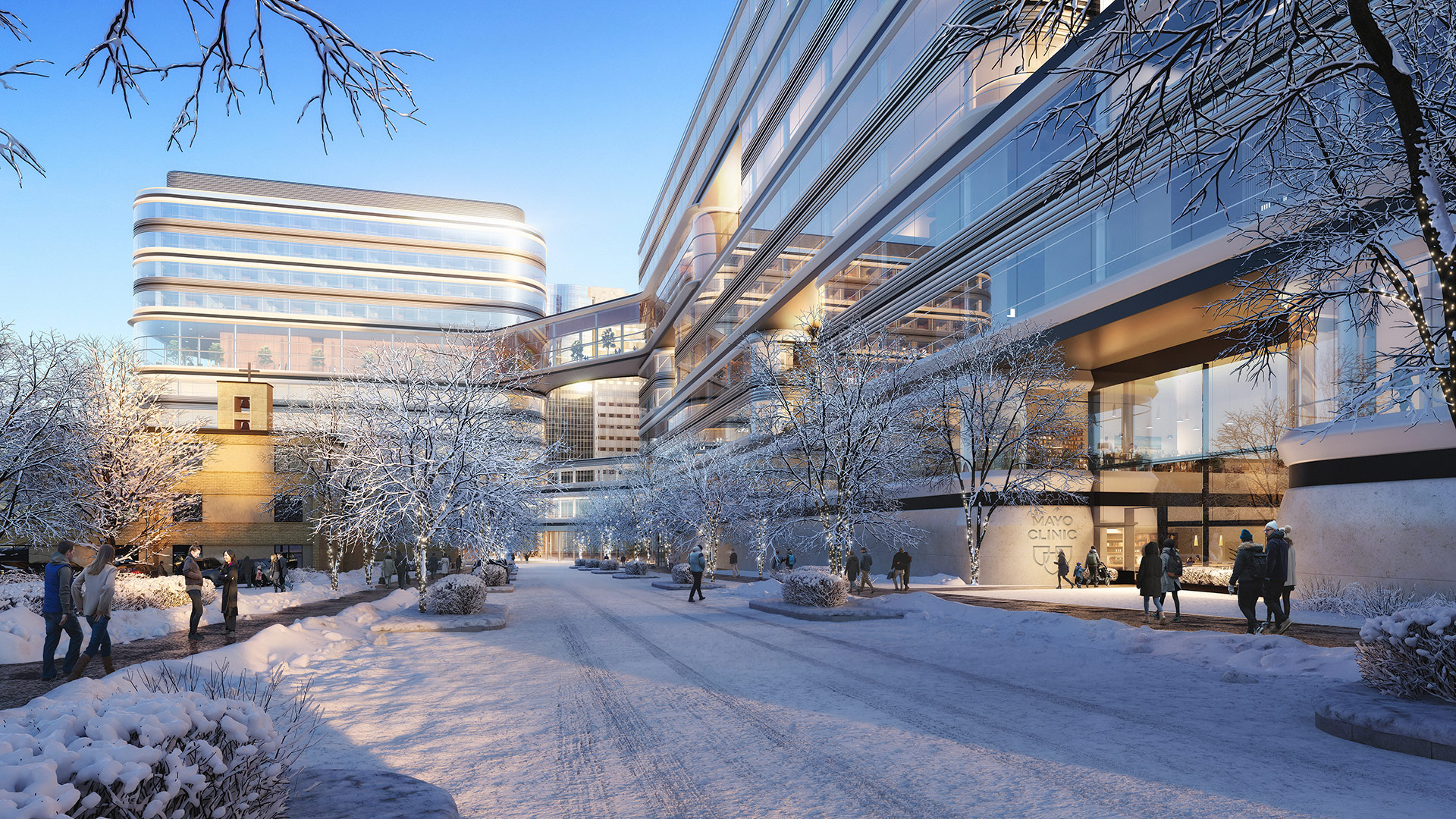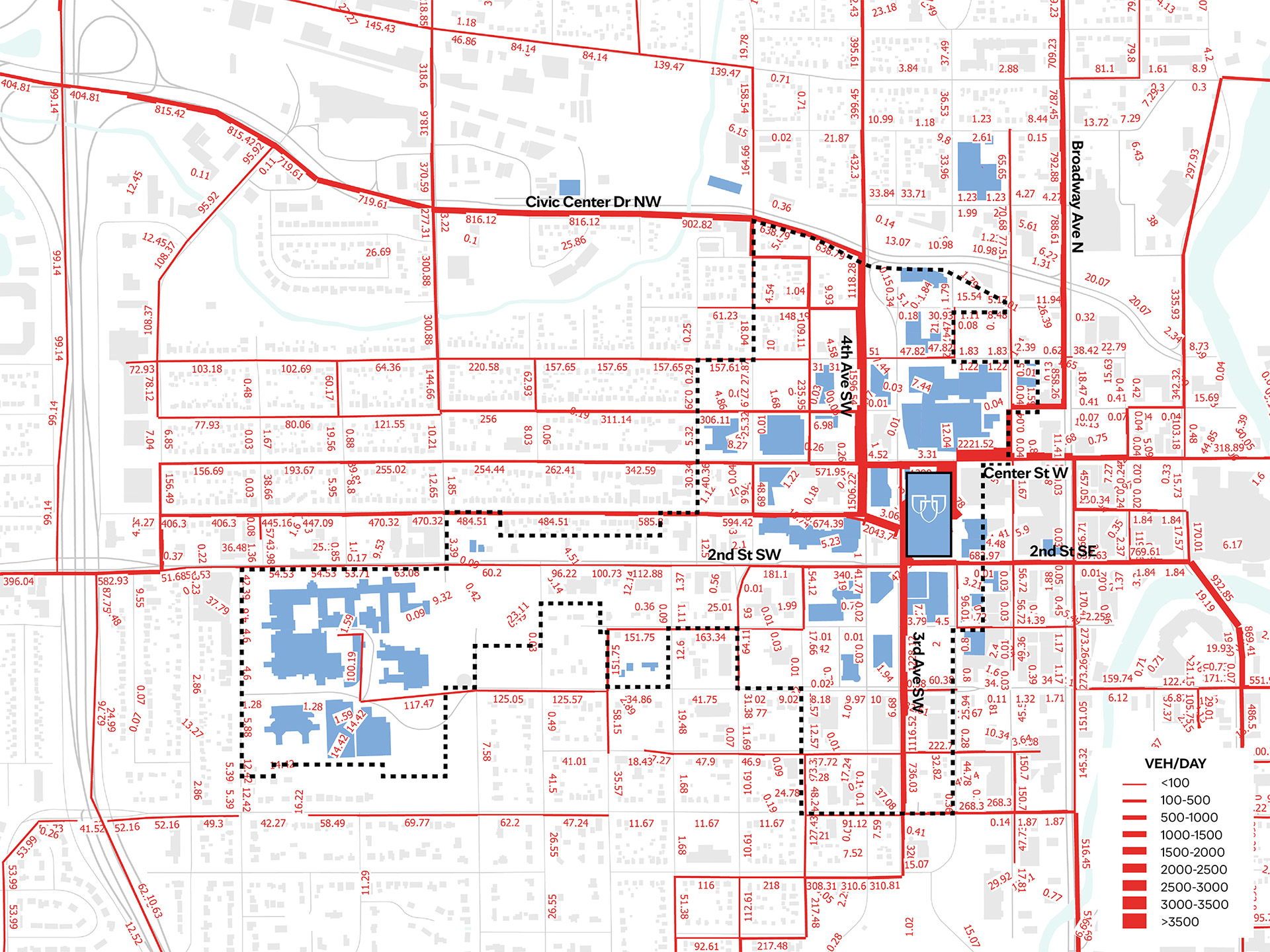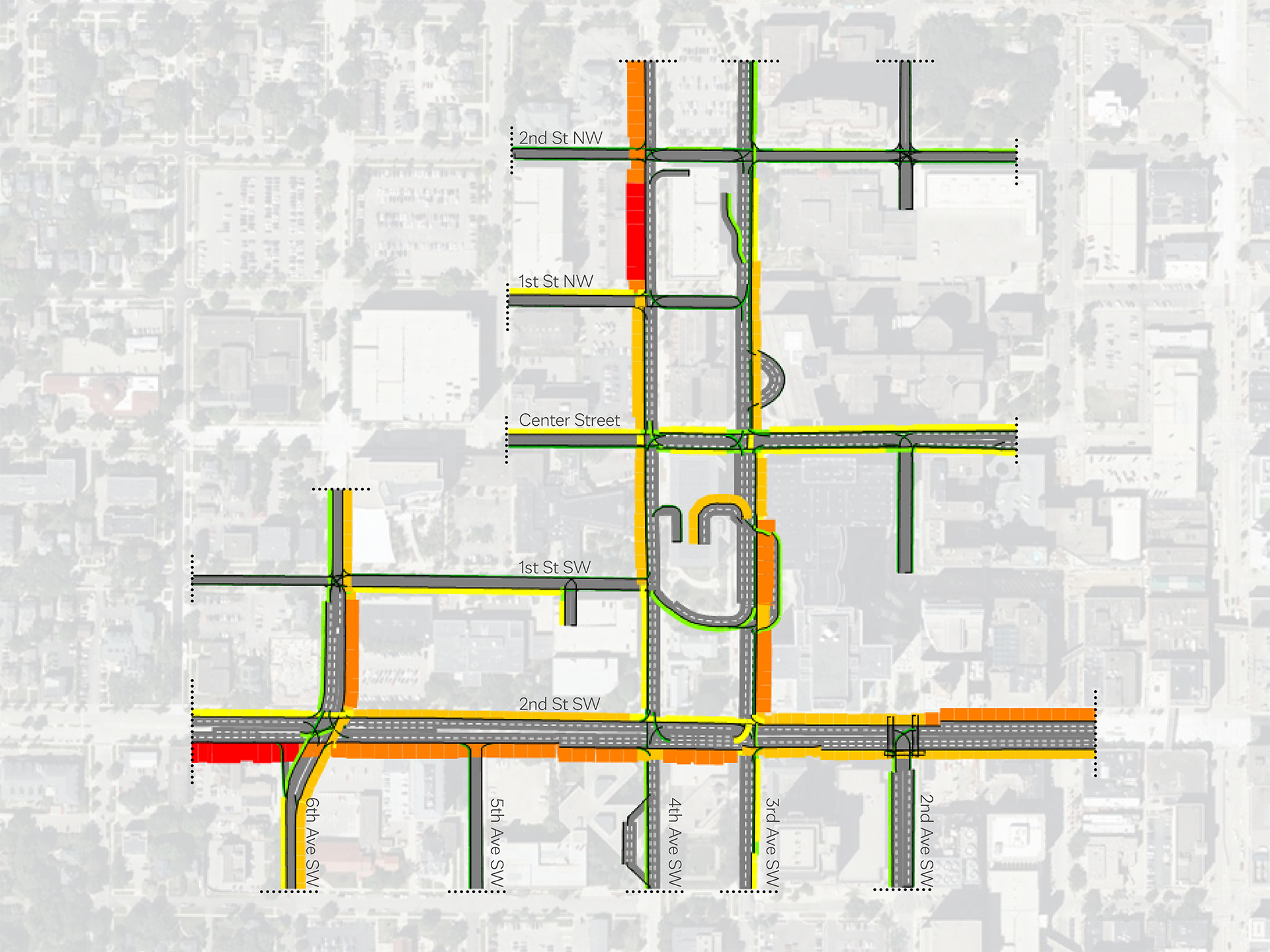Mayo Clinic Campus, Rochester
Rochester, Minnesota, USA
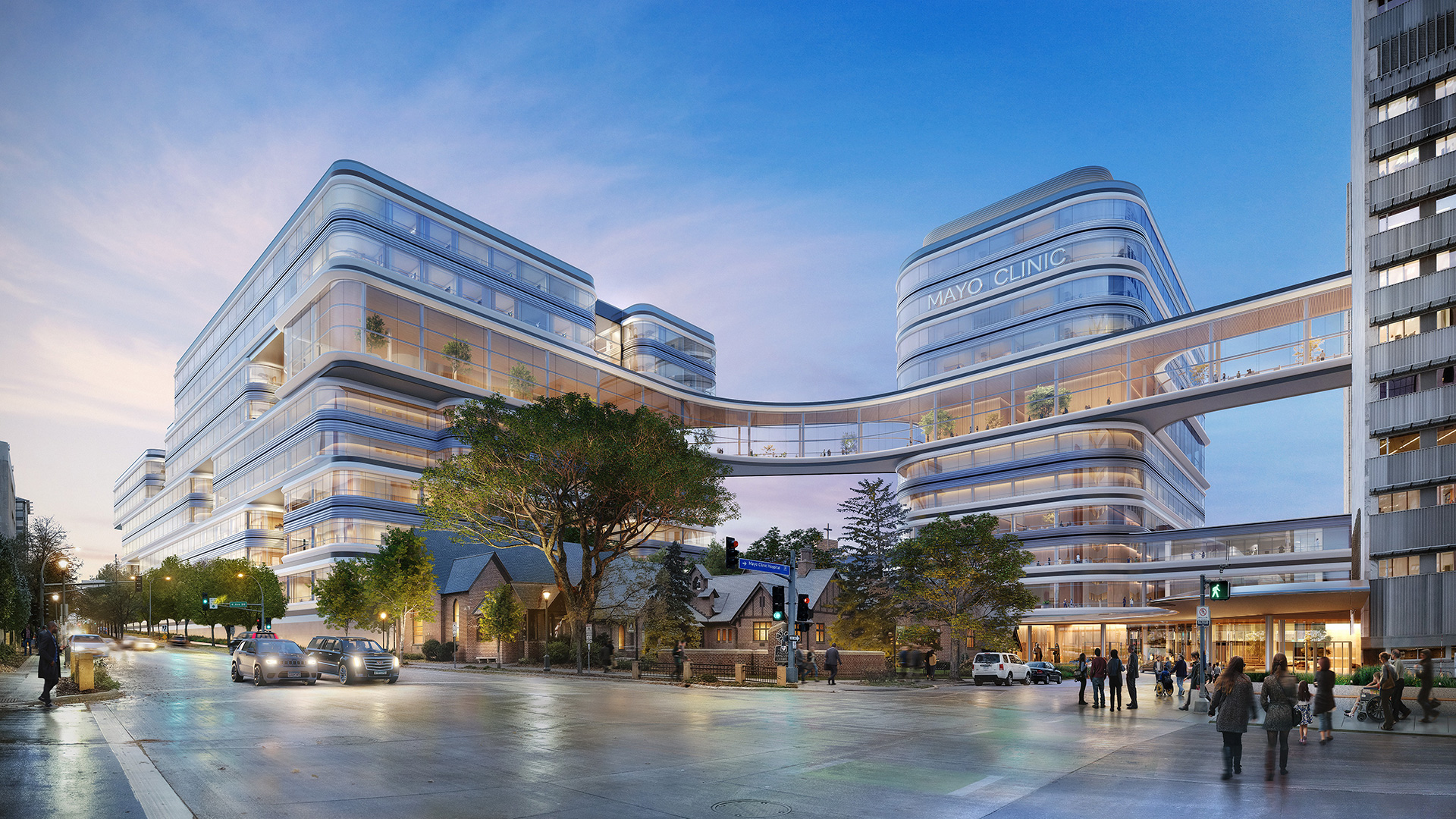
MIC-HUB has worked with Foster + Partners and a multidisciplinary team to realise Mayo Clinic’s revolutionary new vision for healthcare in the heart of Rochester, Minnesota.
The project reimagines the Mayo Clinic downtown campus with new facilities, blending innovative care concepts and digital technologies to transform the patient experience. The redesigned campus will feature unique architecture and integrated digital services to meet evolving patient needs.
With a 160-year legacy of healthcare innovation, Mayo Clinic is a non-profit organization for the advancement of clinical practice, education, and research. The vision behind the Mayo Clinic project is to bring medical teams and patients together in new ways that are designed to advance teamwork, transform the patient experience, find new cures and improve outcomes.
There is also an innovative approach to the urban design of the project, which aims to enhance the visitor experience. It will create a unified campus with a continuous pedestrian area, spanning four blocks in the very heart of the downtown. A new clinical building, acting as the pivot point of the new pedestrian-oriented space, will connect the new and historical facilities of the Mayo Clinic.
Location
Rochester, Minnesota, USA
Client
Foster+Partners
Main expertise
Mobility Consultancy; Parking Consultancy; Pedestrian and Cycle Studies; Transport and Traffic Modelling
PROJECT HIGHLIGHTS
- Integration with ongoing infrastructure initiatives, ensuring improved connectivity and sustainable mobility options
- Comprehensive traffic study, evaluating the impacts of the new project at different scales
- Macro-scale simulations using the Cube Voyager model from the Rochester Olmsted Council of Governments (ROCOG) to compare current and future scenarios
- Micro-scale simulations of the downtown campus involving over 20 intersections, developed using PTV Vissim software
- New parking strategy that enhances the arrival experience
Project gallery
Our contribution
MIC-HUB has crafted a comprehensive mobility strategy for the new campus configuration by optimizing access flows to the hospital and assessing the impacts on the surrounding urban network.
This strategy addresses the closure of key segments of two major downtown avenues, which have been repurposed to create space for the new pedestrianized campus. The project emphasizes seamless integration with ongoing infrastructure initiatives, including a new BRT line (Bus Rapid Transit) and an expanding network of bike lanes, ensuring improved connectivity and accessibility, and a range of sustainable mobility options for the campus and the city at large.
A new parking strategy will ensure the most convenient arrival experience while maximizing the use of central areas for patient care rather than car storage. Beyond car accessibility, new, alternative mobility solutions will offer patients, visitors, and hospital staff multiple options for convenient, safe, and seamless access downtown.
To implement this ambitious expansion without disrupting medical operations, MIC-HUB has collaborated closely with the project team to meticulously plan the traffic and access strategy during the interim phases. The emphasis remains on delivering the best possible experience to patients and their loved ones, also during the years of construction.
